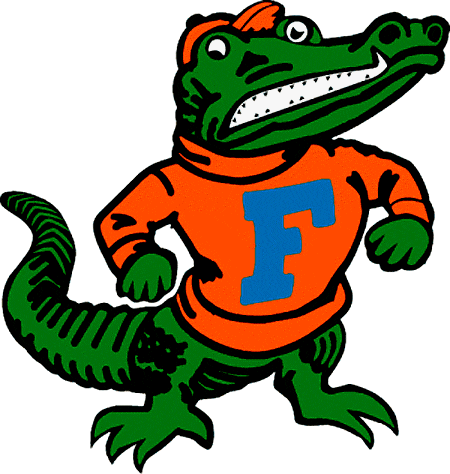The Bridges of Duval County
by Alec Newell
 |
| The Main Street Bridge against the Jacksonville skyline |
 |
| Henry Holland Buckman |
There are
only two of the world's great rivers that flow north, the Nile is one and the
St. Johns River is the other. As the St.
Johns flows into Duval County it passes the first of the eight bridges that span
the river on its way to the Atlantic Ocean.
The Buckman Bridge, built in 1970, connects Mandarin to Orange Park, and
is named for Jacksonville lawyer and State Legislator Henry Holland Buckman
(1858-1914). At its west end, the bridge
lands at the north-south boundary between Clay and Duval County. As the river moves through Jacksonville, it
flows past seven more bridges on its way to the Mayport Jetties.
Can you name them?
If you said the Fuller Warren, the Acosta, the Main Street, the Isaiah D. Hart, the Mathews, and the Dames Point Bridges,
you'd almost be right.
 |
Crews replacing the single track swing bridge with the double tracked "bascule lift" Florida East Coast
Railway Bridge, taken from the original Acosta Bridge circa 1925
|
The first
bridge to span the St Johns river at Jacksonville was the Florida East Coast
Railway Bridge. Built by Henry Flagler
in 1889, it was a single track swing bridge that allowed direct rail access
from Jacksonville to Southside and the beaches beyond. That bridge was replaced in 1925 by a double
tracked "bascule lift" bridge that still operates. It runs closely parallel to the west side of
the Acosta bridge, and since it carries no automobile traffic, many people
forget that it's even there. Until 1921,
all automobile traffic that crossed the river near Jacksonville had to go by
ferry.
 |
Original Acosta Bridge (foreground) FEC Railway Bridge (middle ground)
Fuller Warren Bridge (in the distance) |
 |
| The St. Elmo W. Acosta home circa 1885 |
Jacksonville's
first major bridge built for pedestrian and automobile traffic was named for St.
Elmo W. Acosta (1875 -1947). Informally
known as Chic Acosta, he had been a City Commissioner, a State Legislator, and
is still remembered as one of Jacksonville's first "green"
politicians, and an opponent of women's suffrage. The home that he and his family lived in at
Empire Point is now part of the Episcopal High School Campus, and is currently
used for classrooms and studio space by the Fine Arts Department there.
 |
| The Acosta house as part of the Episcopal High School Campus |
By July of
1941 Jacksonville had its second automobile bridge. Commonly known as the Main Street Bridge, or simply
called the "blue bridge" by some; it is officially neither. In 1957 the bridge was named as a tribute to
Jacksonville's only 18 year, seven term Mayor.
There is a seldom noticed sign over the south entrance of the structure
to indicate the span's official name, the John T. Alsop Jr. Bridge.
 |
| Governor Fuller Warren |
The original
Fuller Warren Bridge was completed in 1954, and named for Florida's 30th
Governor, who had also served as both a State Representative and as a member of
the Jacksonville City Council. For a
time, the Fuller Warren was one of Jacksonville's three toll bridges. The tolls were lifted in 1988 during Mayor
Tom Hazouri's administration, and in 2002 the original bridge was replaced by
an eight lane prestressed concrete span of the same name.
Another one of Jacksonville's (former) toll bridges connects the Arlington Expressway to Downtown
Jacksonville. It was built in 1953 and
named for John E. Mathews, a Florida State Legislator who had also served as Chief
Justice of the Florida Supreme court. In
1984 the bridge was painted maroon red to celebrate the Jacksonville Bulls who
were then members of the now defunct U.S. Football League.
 |
| John E. Mathews Bridge |
The Isaiah
D. Hart Bridge completed in 1968, also called the Green Monster by some
commuters, was named for the Patriot War veteran and plantation owner Isaiah David
Hart (1792-1861) who is credited with founding Jacksonville in 1822. Several of Jacksonville's downtown streets
are named for his children: Julia,
Laura, and Ocean, which is named for Ossian B. Hart, who would become Florida's
10th Governor in 1873.
 |
| The Isiah D.Hart Bridge from North Florida Shipyards |
 |
| The Napoleon Bonaparte Broward Bridge to Dames Point |
 |
| Napoleon Bonaparte Broward |
The newest and probably the most visually
impressive span, commonly known as the Dames Point Bridge, is officially the
Napoleon Bonaparte Broward Bridge; it is
named for Florida's 19th Governor.
Broward (1857-1910), who was orphaned at twelve, decided on a maritime
career, and came up through the ranks as a tug boat operator, riverboat captain,
and bar pilot. He served a stint as
Jacksonville's sheriff but left that office to become a gun runner during the
Spanish American War. At that war's end,
he returned to a political career that culminated in a Florida Governorship. Broward's old home still stands facing the
St. Johns River, near the entrance to the Kingsley Plantation on Ft. George
Island. The address is 9953 Heckscher Drive, 9.3 miles east of the Napoleon
Bonaparte Broward Bridge.
 |
Home of Governor Napoleon Bonaparte Broward
9953 Heckscher Drive, Ft. George Island |























































